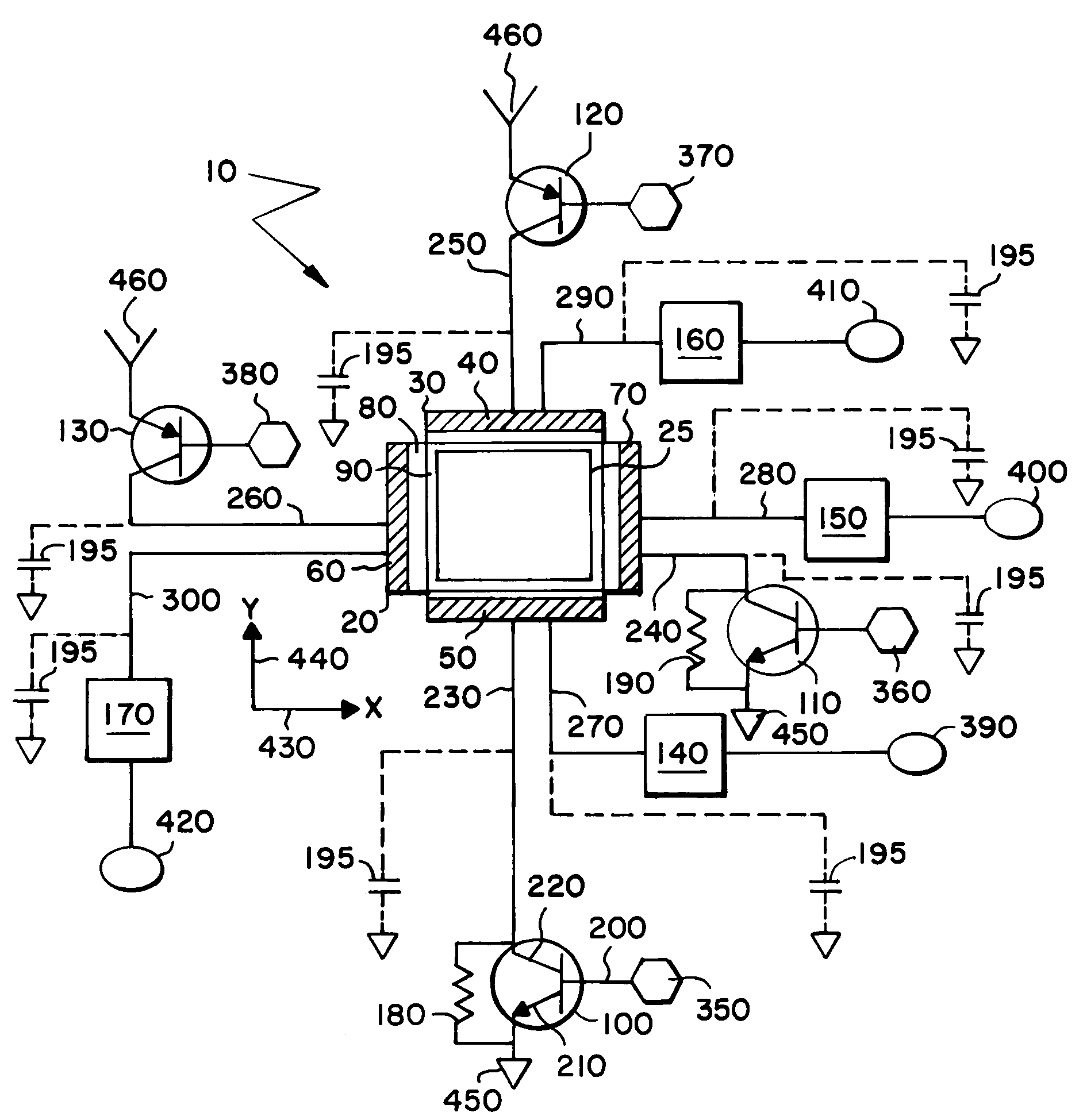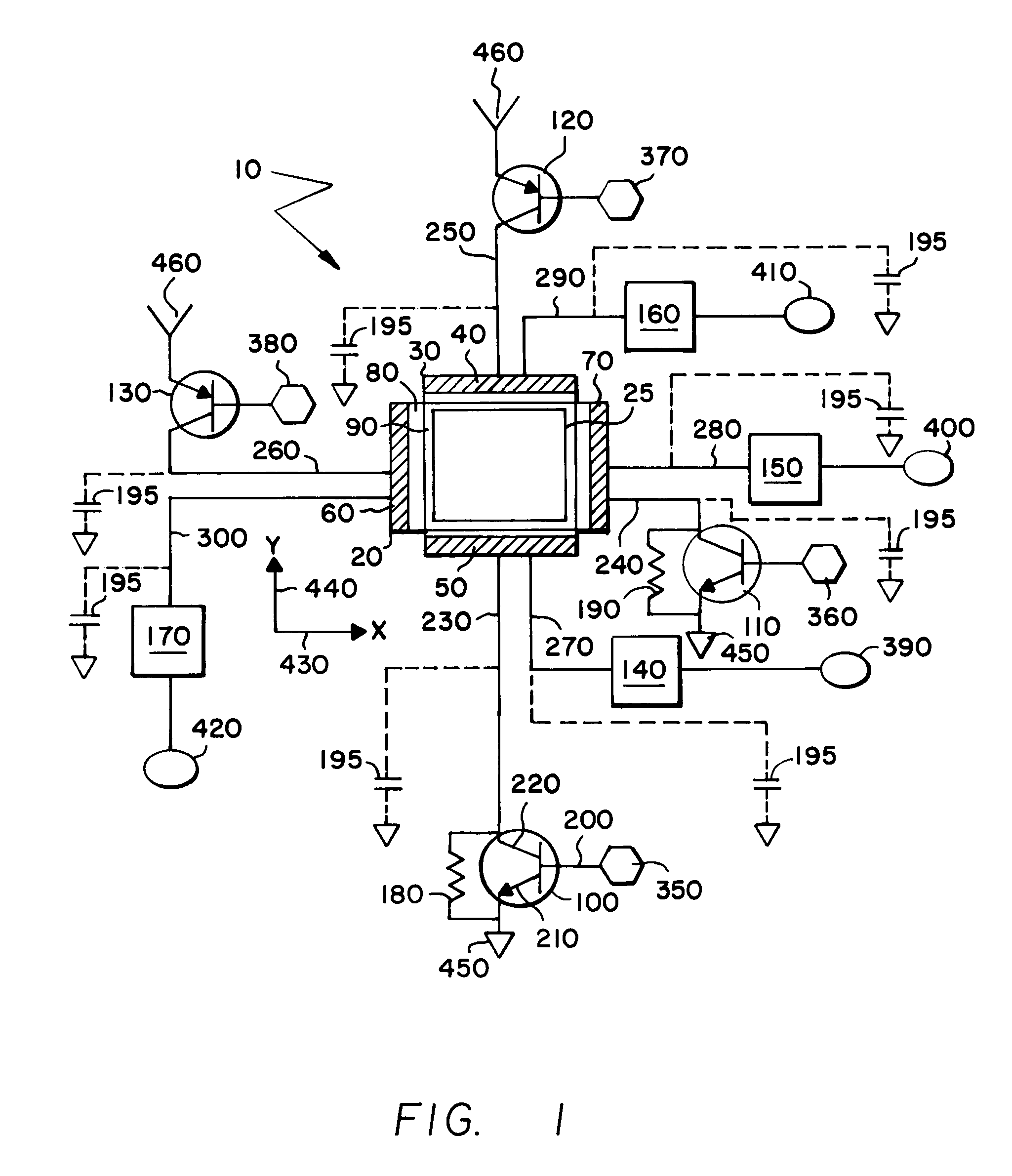Detecting a 'no touch' state of a touch screen display
- Summary
- Abstract
- Description
- Claims
- Application Information
AI Technical Summary
Benefits of technology
Problems solved by technology
Method used
Image
Examples
Embodiment Construction
[0032]The features of one embodiment enable improved efficiency in generating pixel coordinate estimates through enhanced techniques of calibration and validation of the estimates. As used in this specification and claims, a pixel coordinate estimate corresponds to that pixel position on the touch-screen display that is an estimate of where a user has touched the screen. This embodiment offers a more efficient approach to generating pixel coordinate estimates that minimizes delays, reduces corruption of estimates due to noise, enhances ESD protection, and eliminates the need for user-interactive calibration. The pixel coordinate estimates are characterized as digital signal values in a processor of the touch-screen display system. These digital signal values are generated, in part, from a set of analog voltage levels, sampled from analog resistive screens in the touch-screen display system, corresponding to the position of where a user has touched the display screen.
[0033]FIG. 1 is ...
PUM
 Login to View More
Login to View More Abstract
Description
Claims
Application Information
 Login to View More
Login to View More - R&D
- Intellectual Property
- Life Sciences
- Materials
- Tech Scout
- Unparalleled Data Quality
- Higher Quality Content
- 60% Fewer Hallucinations
Browse by: Latest US Patents, China's latest patents, Technical Efficacy Thesaurus, Application Domain, Technology Topic, Popular Technical Reports.
© 2025 PatSnap. All rights reserved.Legal|Privacy policy|Modern Slavery Act Transparency Statement|Sitemap|About US| Contact US: help@patsnap.com



